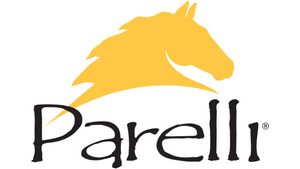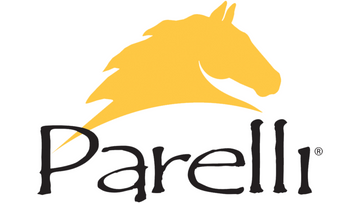
I often get asked the question, “What should I do when my horse…..?” You fill in the blank with any negative behavior imaginable. The better question we can ask ourselves is, “What can I do to prepare myself and my horse better so that (fill in the blank) doesn’t happen?”
When you think about puzzle-solving challenging behavior on the trail, you must first remember that horses are born skeptics, cowards, claustrophobics, and panic-a-holics by nature in various degrees. In addition, horses are herd animals that don't like to feel like their herd is leaving them behind. So, separation anxiety and tension on a trail ride are common occurrences.
I often share with students that if you want to really be good with horses, you should watch what everybody else does and do the opposite. Wherever you live, there will be a “norm” for your local area. Look at what that is and think about what the opposite may look like.
A common occurrence when trail riding is that you have two kinds of people and two kinds of horses: Mr. Fast-Walker-Leader, who wants to be in front, and Mr. Pokey-Dokie, who always gets put at the back of the line. So, what would be the opposite? Put the slow one in the front and the fast one in the back.
You could end up with a horse who starts to jig because he wants to rush along the trail. What happens in Normalville? The rider keeps fighting and holding him back.
Instead of this predatory pulling and grappling behavior that causes a horse’s prey animal instinct to rise, let’s play the same game that we play while driving on the road. What do you do with a tailgater? You flash your brake lights. Well, this is the trail-gater game.
Remember, horses were husbands in their last life. They’re allergic to the words “Quit it, stop it, and don’t.” To use psychology, we need to set it up so that we allow them to make their own mistake, and they blame the situation, not you as the rider.
Number one, prepare your horse to be on the trail in the first place. Then, number two, prepare the situation by putting the fast horse in the back and the slow horse in the front. This slows everybody down to play the trail-gater game or the Beep Beep Game. This is the Yo-Yo Game on a trail ride, and it teaches your horse to read, rate, and respect personal space.
I drove into my very first clinic as an ambulance was driving out. The participants arrived early to warm their horses up, and people were riding. All kinds of things were happening, including one person getting bucked off, which caused another person to get run over. There were two students in the ambulance before I even arrived. After this experience, I came up with the Yo-Yo Game to teach horses to back up better, to stay back, and to stay out of people's personal space.
None of this prior and proper preparation for the trail will make sense to you or your horse unless you’ve played and won the Seven Games On-Line first and then in a FreeStyle situation. Then, you can add purpose by playing these games on the trail. The secret is practicing all these things ahead of time. Take a trail ride with ten other riders, but stay in the arena. Play the Circling Game with six horses simultaneously so the horses learn to read and rate the situation and the other horses. This teaches horses to yield and get out of the way, speed up or slow down, and control their emotions while the other horses’ feet are moving.
Remember, it’s about preparing horses. If you have a horse with an extreme case in the right environment, like in the backcountry, and if you have a strong enough herd, one of the most effective things I’ve done is to turn the anxious horse loose. He’ll run up and down the trail, and finally, he’ll start to synchronize with the other horses mentally, emotionally, and physically and learn to move along the trail calmly.
We need to remember that human beings have four propensities that cause them not to be true partners with a horse: chauvinism, autocracy, anthropomorphism, and an addiction to linear thinking. Humans micromanage horses, thinking they’re smarter than the horse. Our predatory instincts, monkey-see, monkey-do behavior, and direct line thinking cause us to believe we’ve got to kick them to go, pull them to stop, and use the reins to turn, like a motorcycle or a four-wheeler.
What we’re after here is understanding. This is one of my key phrases: communication first and then understanding. Horses have to learn to function positively in a herd environment out on the trail.
After all, it’s not so much what you do on the trail ride as what you do in preparation for the trail ride. Do you know someone who only likes trail rides and doesn’t want to invest time in the arena? Arena exercises give us the communication to prepare ourselves and our horses for being on the trail. Do you also know someone with a hot house flower who can’t leave the arena? This isn’t natural horsemanship, either. We need to prepare our horses for the real world.
After all, horsemanship can be obtained naturally through communication, understanding, and psychology. Often, we get in a hurry and don’t want to invest the time in the prior and proper preparation. Remember, your horses aren’t like your snow skis. You can’t put them away one season, get them out the next, and expect everything to be in perfect condition. Instead, take the time it takes to prepare them so that, in the end, you are savvy, and safe, and it takes less time. Remember to keep it natural, and in all things, but especially on the trail, may the horse be with you.







